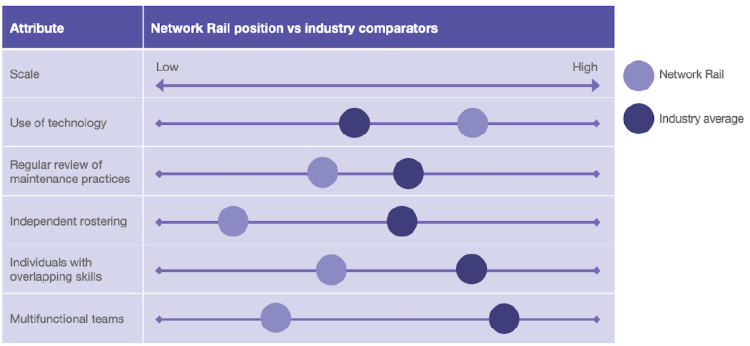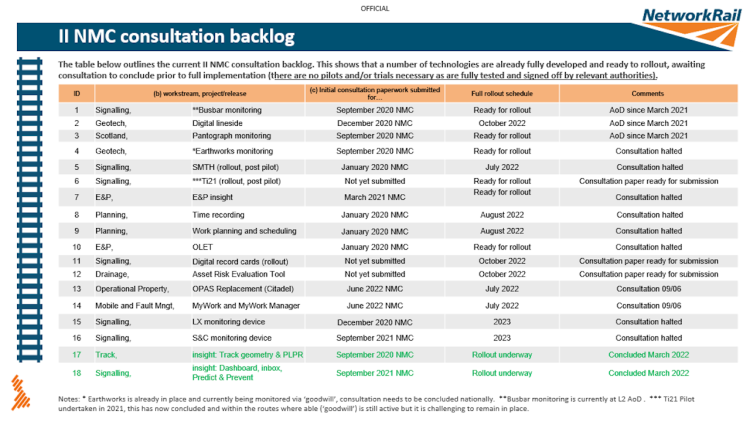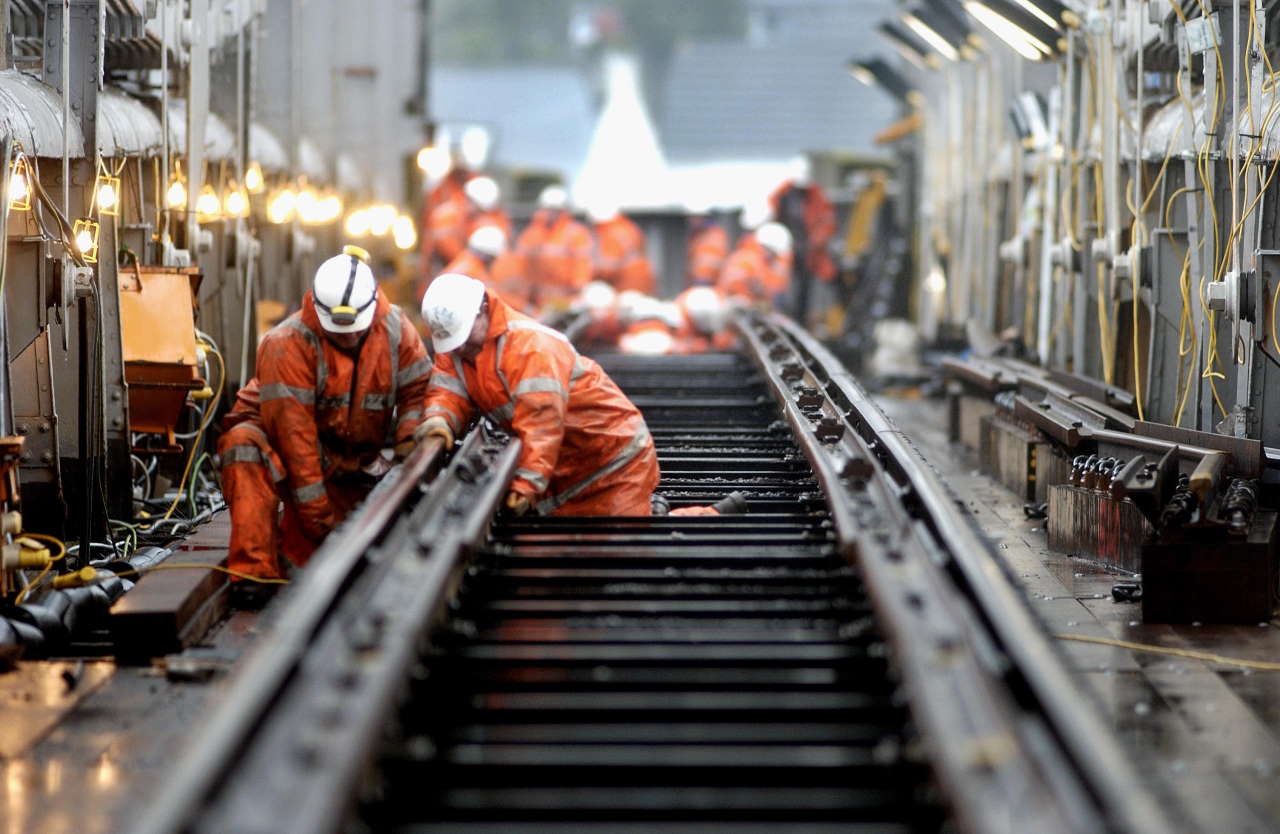A new study has revealed that Network Rail has fallen behind other industries such as water, aviation, energy and roads in how it utilises people.
The study which was released on the 13th of July was carried out by specialist infrastructure consultancy, Nichols, with a focus on how the maintenance of infrastructure and key assets is undertaken and how this compares to other industries in the UK and across Europe.
Industries such as water, aviation, energy and roads are ahead of Network Rail in how they use team members with the report highlighting improvements Network Rail could make to unlock efficiency such as :
- Introducing individual rostering to utilise staff more effectively
- Upskilling specialists and multi-skilled teams with wider knowledge to allow first-response staff to fix most faults and get trains moving faster
- Increasing and accelerating the use of technology to keep employees safe

Andrew Haines, Network Rail chief executive said: “Britain deserves a railway maintenance regime that is modern and fit for the 21st century. Obstructing vital changes that make the railway and its workers safer, and that improve the reliability of services we provide, is in no one’s interest. With common sense and compromise, our proposals can deliver millions of pounds in savings that we can then translate into a better pay offer for all our people. It’s a win-win.”
The study also suggested that increased productivity and efficiency could be found by ensuring maintenance is done at the necessary time, by the correct number of staff who have the right skills and would mean individual rostering.
The Nichols study suggests that productivity and efficiency gains can be realised through ensuring maintenance is done at the right time, by the right number of staff with the right skills.
Individual rostering:
Current contractual terms mean that team managers need to agree rosters up to 52 weeks ahead and to roster teams together. As workload is variable and unpredictable in the railway environment it can be difficult to flex rosters, especially if more than one team are required for the work.
The current rostering practice of Network Rail was found to be less flexible and more restrictive than other comparable organisations who usually roster staff on an individual basis with shorter roster cycles which are managed centrally and have no issues with deploying staff as needed.
Network Rail wants to create more flexibility to independently roster individual staff with a focus on the size, nature, location and timing of the work. These changes could be progressed by a centralised resourcing function that works to oversee overall business needs.
Network Rail is confident that the necessary changes can be put in place without compulsory redundancies. Approximately 1,800 jobs will need to go but voluntary serverance which is desired by hundreds of employees alongside natural wastage, redeployment and retraining, Network Rail believes that there will be a position for everybody who wants one.
Introducing multi-skilled, multi-functional teams:
Network Rail’s current maintenance responsibility is split into Network Rail’s 14 routes and again into Maintenance Delivery Units. The units are orgnised into three distinct discipline-based teams which are Track, Signalling and Telecoms, and Electrification and Plant (E&P). A standard team sees up to three to four people including a Team Leader, Technician/s and Operative/s who are trained in skills that are only needed in that specific discipline. When teams are given a job, the entire team will travel to the location despite the size of the task. Where a job needs more than one discipline such as signalling and track, more than one team will attend but will usually work sequentially. These practices lead to a large amount of wasted time with team members waiting for jobs to be completed by other disciplines before they can begin their own work.
A more efficient and productive way of work would be to create joint multidisciplinary teams in place of individual disciplines, which would lead to a reduction in the number of employees needed to maintain the network and associated costs. The introduction of such teams would ensure that work could be carried out over geographic boundaries. Current working practices within the rail industry mean that teams in one route will not assist another in a neighbouring area even if it has the ability to do so.
Increasing adoption of technology:
The railway in Britain is the safest major railway in Europe and huge efforts have seen improvement in safety over the last 20 years. The safety measures carried out have often been in the face of initial reluctance from trade unions who even today tend to frustrate efforts to take on technology on the railway.
The study recognises that whilst Network Rail has made substantial advances in the use of technology, further improvements could be made as the deployment of such technology has been slow. The information in the table below reveals how around a dozen key technological improvements have been blocked by the RMT for more than two years.

Analysis carried out by Network Rail reveals that current maintenance scheduled tasks could be cut by around 50% by using technology and data, reducing the number of manual inspections carried out by maintenance teams and improving safety. A recent report by McKinsey focused on maintenance for rolling stock and suggested remote-enabled condition-based maintenance could cut manual inspections by a minimum of 60% bringing costs down by more than 10%. The changes could be compared to replacing a quarterly manual utility meter reading with a smart meter.
In order to make the most of technology deployment, Network Rail must have flexible and responsive working practices as other sectors do.






Responses
The penny seems to have at last dropped that when network rail are on site, most of the “workers” are standing around doing nothing most of the time. That is why it has taken over six months to renew some railings at Polsloe Bridge station, a job which could have been completed in a week.